LES DECORS DE FAIENCE
L’émail dans tous ses éclats – Glazing at its most brilliant

While fully respecting traditional techniques, we reproduce ceramic decors in all dimensions and on all types of surfaces, either hand-made or industrial, both small and large scale. The following photos demonstrate the various steps of the construction of our ceramic walls and floors.
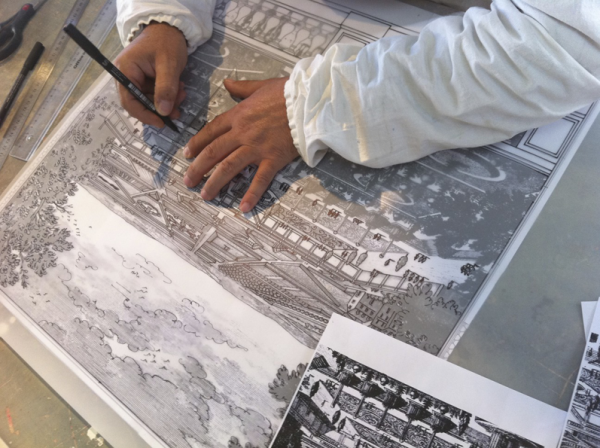
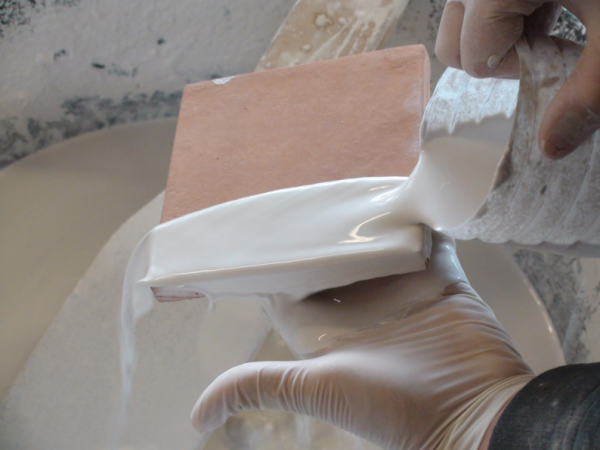
On a tile that has been pre-washed, we pour on the liquid enamel. The terra cotta tile, which is porous, will only retain a thin film of the enamel glaze, serving as the base for subsequent painting.
The drawing reproduced to scale on tracing paper will be pierced by thousands of holes which constitute the stenciled image to be projected onto the tiles.
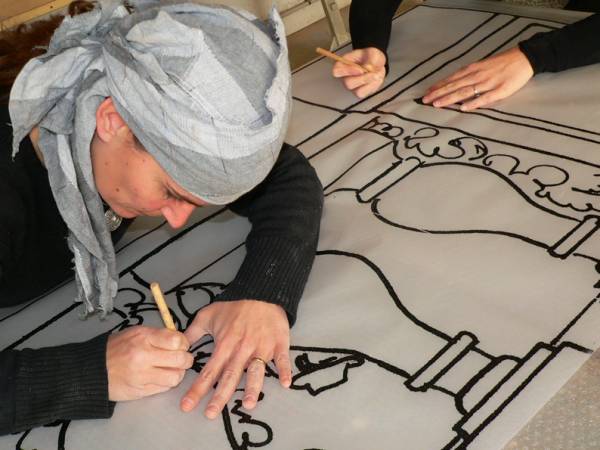
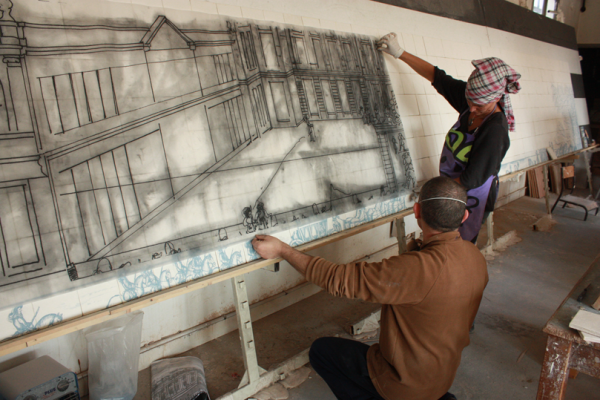
Next we apply the stencil to the tiles and with the help of a paintbrush, we spread a powder of pulverized charcoal which penetrates into the holes of the stencil. This simple procedure allows us to transfer the sketch in a medium that disappears when heated.
At this stage the actual painting may begin. We paint the motif on the tiles using various solutions of cobalt according to a technique similar to ink washing or watercolor.


After baking, the tiles which have been numbered are glued to the final surface and grouted.
See here the hidden door of the vestibule of the Hotel Claude Passart in Paris. Juan Pablo Molyneux wanted to represent the lost chateaux of Paris in a monumental work. In this image, Louis XIV is received by the Swiss Gardes at the Chateau of Marly.
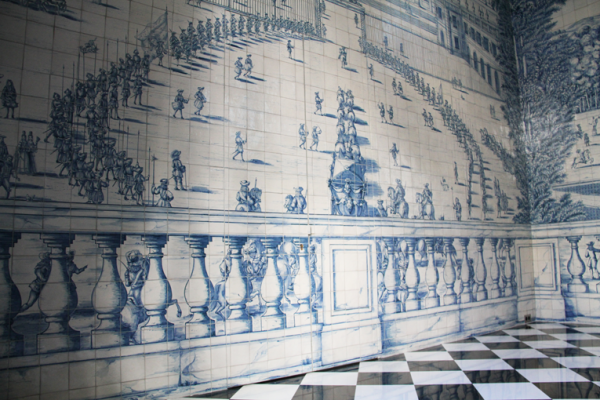
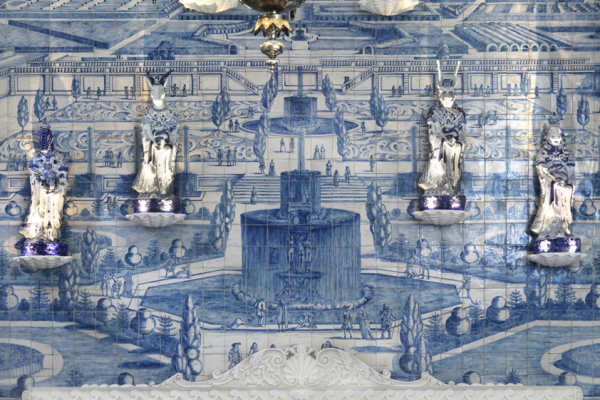
Again in the Hotel Claude Passart, is the West Wall and its French gardens which showcase a collection of Chinese porcelain representing the signs of the zodiac. They are supported by shell-shaped ceramic shelves, also of our own production.
On the left of this same vestibule is the château of Saint Cloud. The different sections are united by a continuous balustrade and trees in each corner of the room, creating a link between the various scenes.

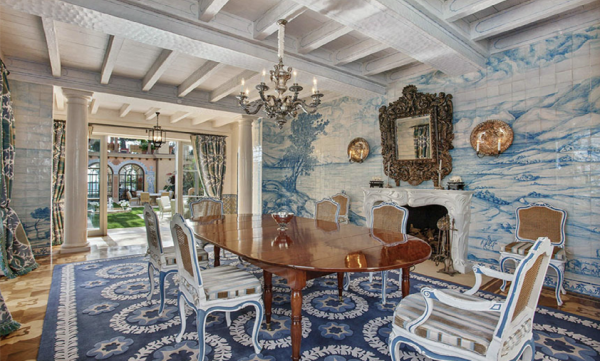
Set in a home in Pebble Beach, California. A ceramic décor in the dining room depicts California in the 18th century. To the right there is a custom made ceramic fireplace mantel. In the center glazed Doric columns lead to the adjacent garden with its arcades and terra cotta and ceramic ornamentation.
In Pebble Beach, the archway leading to the corridor is entirely decorated in ceramic tile portraying a trellis inhabited by birds.
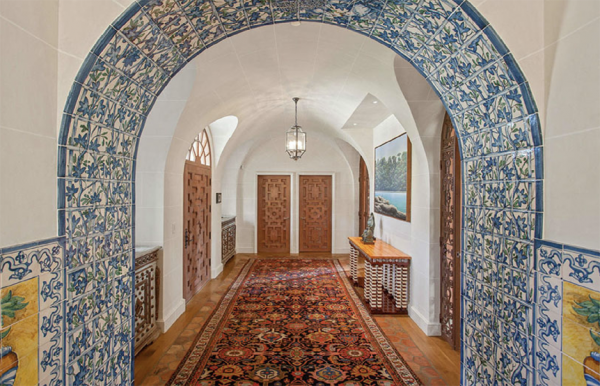
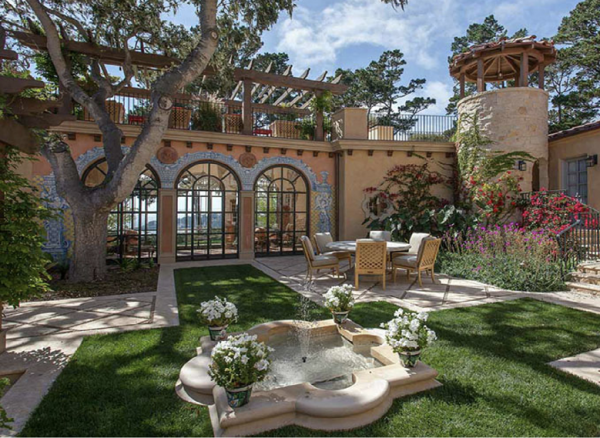
The patio of Pebble Beach with its ceramic décor and terra cotta pillars and medallions.
A close-up of the Portuguese-style decor which inspired the tiles that outline the arcades, literally framing the view of the Pacific Ocean.
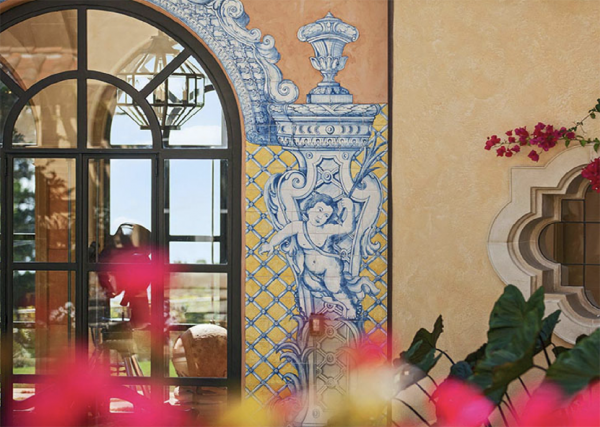
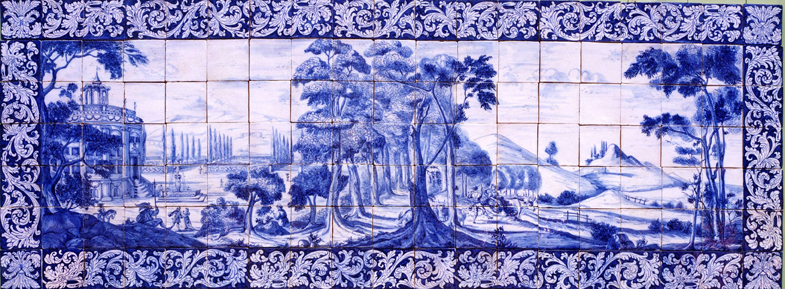
A reproduction of a Dutch scene created in Portugal in the 17thcentury. Tailored to the right proportions, this piece became part of a kitchen credenza.
Reproduction of a Dutch scene from the 17th century in two colors, cobalt and manganese, used in the kitchens of a chateau in the Champagne region.

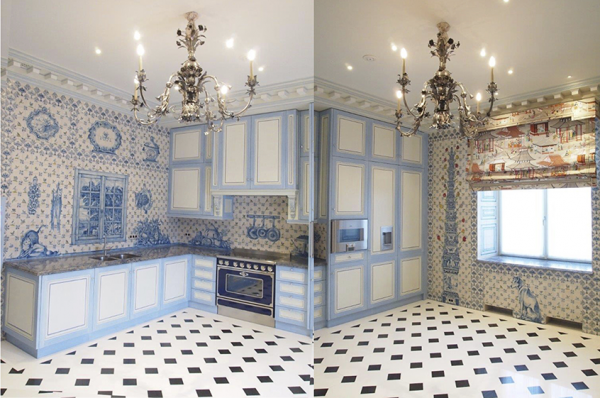
A home in Moscow, Russia
Decorated entirely in blue and white, the Dutch-inspired decor of this kitchen uses trompe-l’œil on the polychromatic tiles, to depict collections of china, tulips, animals, still life and imaginary lattice work.
Reproduction of 17th century ceramic tiles from the Languedoc region
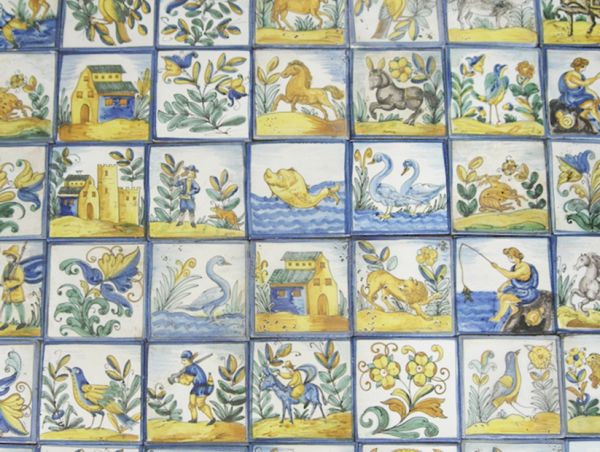

Reproduction of an 18th century Portuguese decor.
Reproduction of an 18th century Portuguese decor.

